In 2021, LOSC Lille pulled off one of the greatest title victories of the last decade in European football.
It may not have had the same awe-inspiring adoration and Italian idolisation as Leicester City’s tremendous Premier League triumph of 2015/16, but Les Dogues, under the tutelage of Cristophe Galtier, putting the cash-heavy, state-backed titans Paris Saint-Germain to the sword made for an incredibly memorable campaign in French football.
However, as Galtier surprisingly stepped down from his winning horse to take the reins at OGC Nice, Lille made a rather peculiar appointment in his place, putting Jocelyn Gourvennec in charge.
While the former EA Guingamp boss did guide Lille to their only ever Trophée des Champions in history, the league campaign was nothing short of disastrous as the side finished tenth. Gourvennec was swiftly dismissed at the end of the season.
Lille needed to regroup under a new boss, someone with European pedigree and relatively high stock. Paulo Fonseca was appointed as the new head coach at the end of June.
Over the past year, the former AS Roma boss was linked with the vacant positions at Tottenham Hotspur, Aston Villa, and Newcastle United, but it was Lille who snagged his signature in the end.
This tactical analysis piece will be an explanation of Fonseca’s tactics over the years to see the style of football Lille can expect at the Stade Pierre Mauroy next season.
Coaching philosophy and preferred formation
The Portuguese coach wants his teams to be in control of games by keeping possession of the ball as much as possible.
But when possession is lost, Fonseca is a firm believer in the Jose Mourinho school of coaching that teams can control the game by controlling the space the opposition has to play into. The keyword here is control, constant control. Control the ball, control the space, control the game – the Fonseca mantra.
Since his days with Shakhtar Donetsk, Fonseca’s tactical identity has been clear. The manager’s preferred formation has almost always been a 4-2-3-1 since his three-year spell in Ukraine.
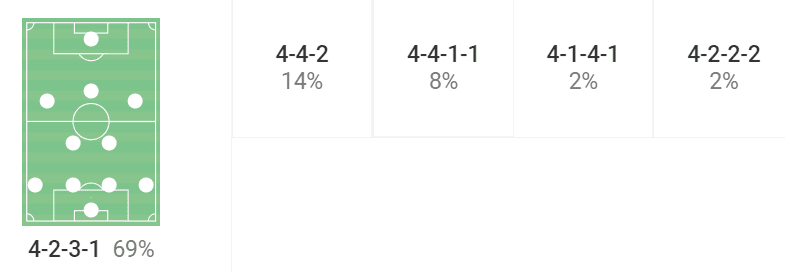
In his debut campaign with Shakhtar in 2016/17, a team which included Manchester United midfielder Fred, Fonseca deployed the 4-2-3-1 on a combined total of 69 percent of his games in charge.
This drastically began to increase as time wore on. In the 2017/18 season, Shakhtar’s usage of the 4-2-3-1 inclined to 85 percent and then fell slightly to 80 percent in his final year with the Ukrainian giants but still remained their prevalent system nonetheless.
Upon arrival in Italy, despite having different players and being unproven in Serie A, Fonseca was adamant that Roma adopt the conventional structure which gives great balance in defence and in attack, but there was still some room for tactical flexibility. The Giallorossi set up in the 4-2-3-1 in 65 percent of their matches in all competitions in the 2019/20 season.
Regardless, in his most recent season in football management, Fonseca oversaw somewhat of a tactical revolution in his mind. Roma’s usage of Fonseca’s preferred system dropped astronomically to merely 11 percent.
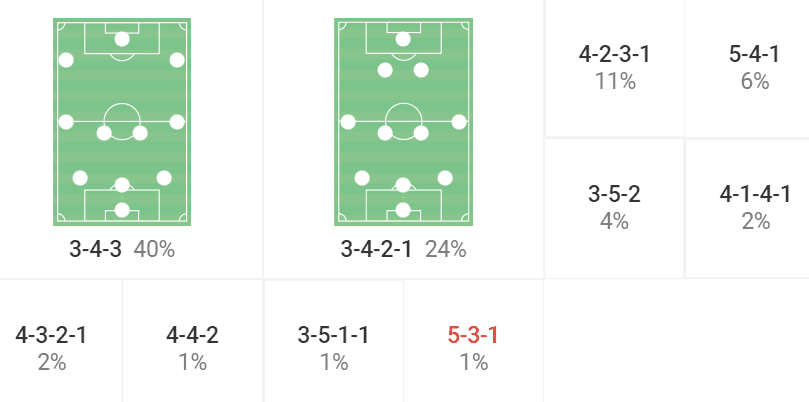
Roma struggled for quite a lot of the 2020/21 season in the league, finishing just seventh. The change to a back three was probably more forced due to poor results and a leaky defence as opposed to a strategic epiphany by the boss but it happened, nonetheless.
What will be interesting to see during Fonseca’s time at Lille is whether his switch to a 3-4-3/3-4-2-1 was just a once-off based on the circumstances in Rome or if he has a newfound tactical love.
Given Lille used the 4-4-2 and 4-2-3-1 quite a lot in the previous campaign under Gourvennec, Fonseca may opt to stick with what the players already know, and tweak within the refined structure.
Don’t expect much high pressing
Typically, for these analysis pieces, it’s easier to begin with the attacking element of a coach’s philosophy. However, for the purposes of this piece, we shall begin with the defensive tactics used by Fonseca over the past few seasons.
In the modern game, managers that put a neat emphasis on ball retention tend to instruct their teams to push high up the pitch to try and win back possession in the attacking third which allows a side to transition within a short distance from the goal.
These two elements usually go hand-in-hand. But not with Fonseca. The Portuguese manager prefers his team drop off, allowing the attacking side to play out from the back unscathed. This can be seen from AS Roma’s numbers during his two-year spell.
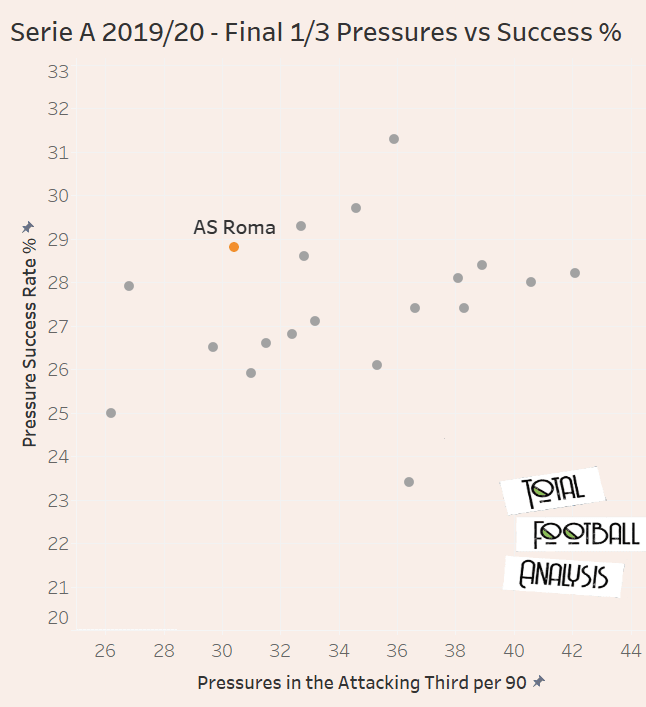
In this graphic, we have measured the number of pressures in the attacking third per 90 of all Serie A teams from Fonseca’s debut season in the Italian capital compared to the success rate of their total pressures.
What can be deciphered from the data is that, while the Giallorossi were actually pretty good in their pressures under Fonseca, boasting a success rate of 28.8 percent, they rarely pressed in the final third. In fact, Roma averaged the third-lowest number of pressures in the attacking third per 90 over the course of the campaign with just 30.4.
In the season after – the last time Fonseca managed a side – Roma’s numbers improved slightly regarding their final third pressures but still not enough to make them look like a Jürgen Klopp-coached team, although their success rate actually dropped slightly down to 28.7 percent.
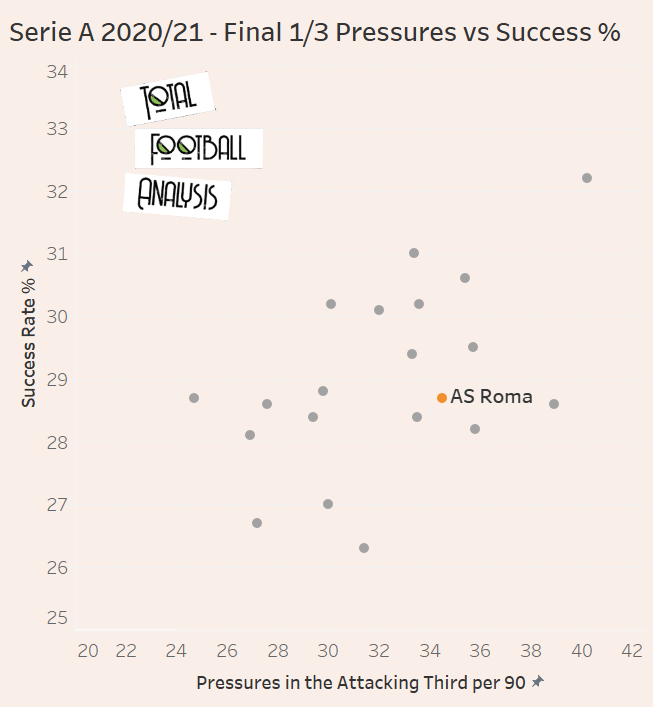
These more recent figures of Fonseca’s time in charge of Roma make the improvement look far more drastic than it actually was. This was the first full COVID season in Italy and so pressing numbers dropped across the board.
However, Roma were now averaging 34.5 pressures in the final third per 90 instead of 30.4 from the season prior but the rise certainly wasn’t enough to label Fonseca’s team as high-pressing.
One of the reasons behind Roma’s lack of pressing was that the manager had an ageing forward line at his disposal, being led by the former club captain Edin Džeko who was in his mid-30s.
When Roma’s opponents were building out from deeper areas of the pitch, instead of matching them in the press, Fonseca ordered his players to drop off into a compact mid-block, irrespective of their formation choice on the day.
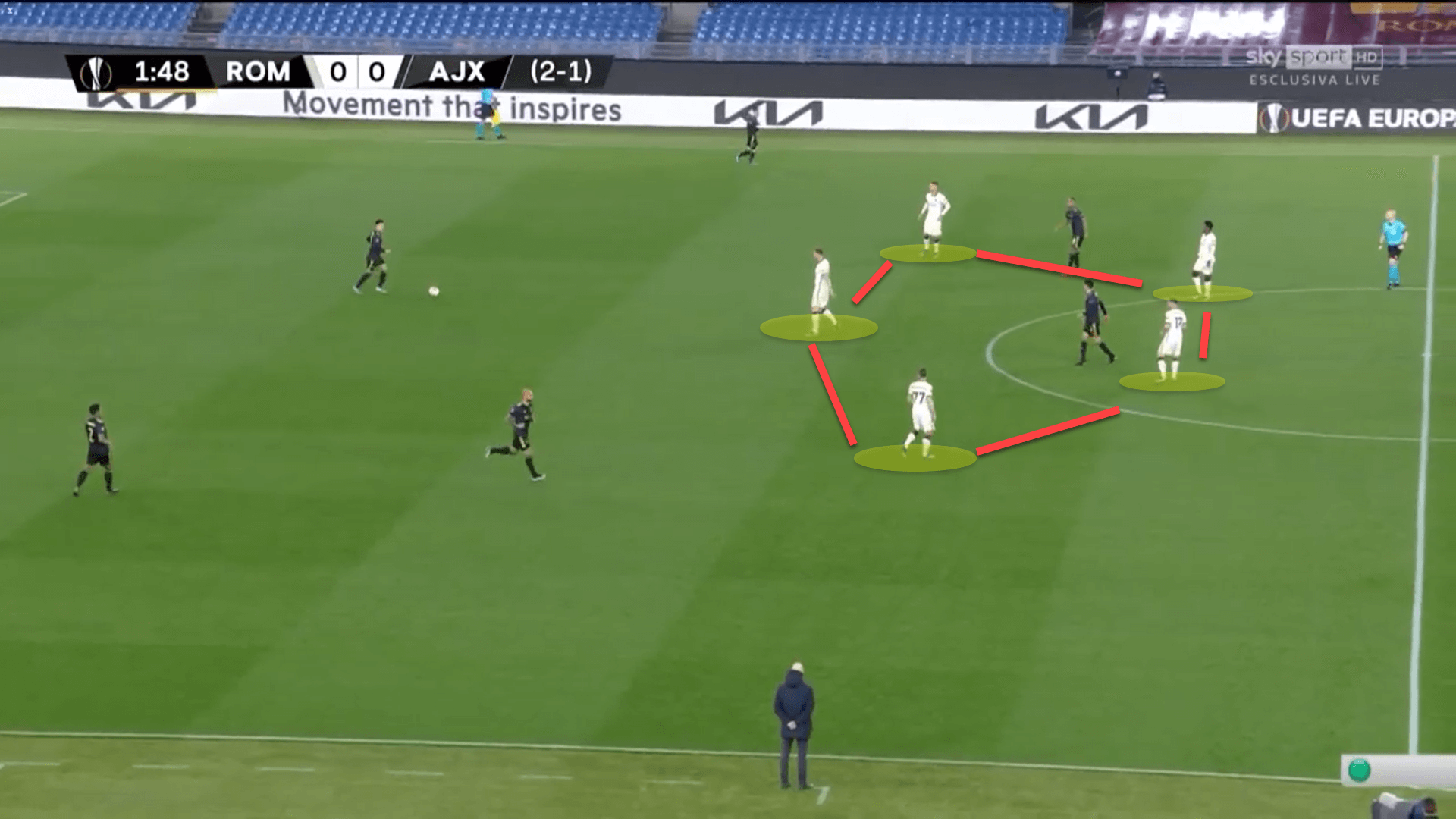
For instance, here, Erik ten Hag’s Ajax were playing out from the back and were given their entire defensive third to push up without any pressure being applied from the forward line.
Instead, Roma’s three forwards and midfielders were remaining within close proximity to one another within their 5-3-2 defensive mid-block, cutting off the passing lanes into the double-pivot Ajax had created behind the first line of pressure.
The backline always remains relatively high during this phase under Fonseca. He wants his team to be compact vertically and horizontally, leaving little to no space for the opponent’s players to receive the ball inside their defensive block.
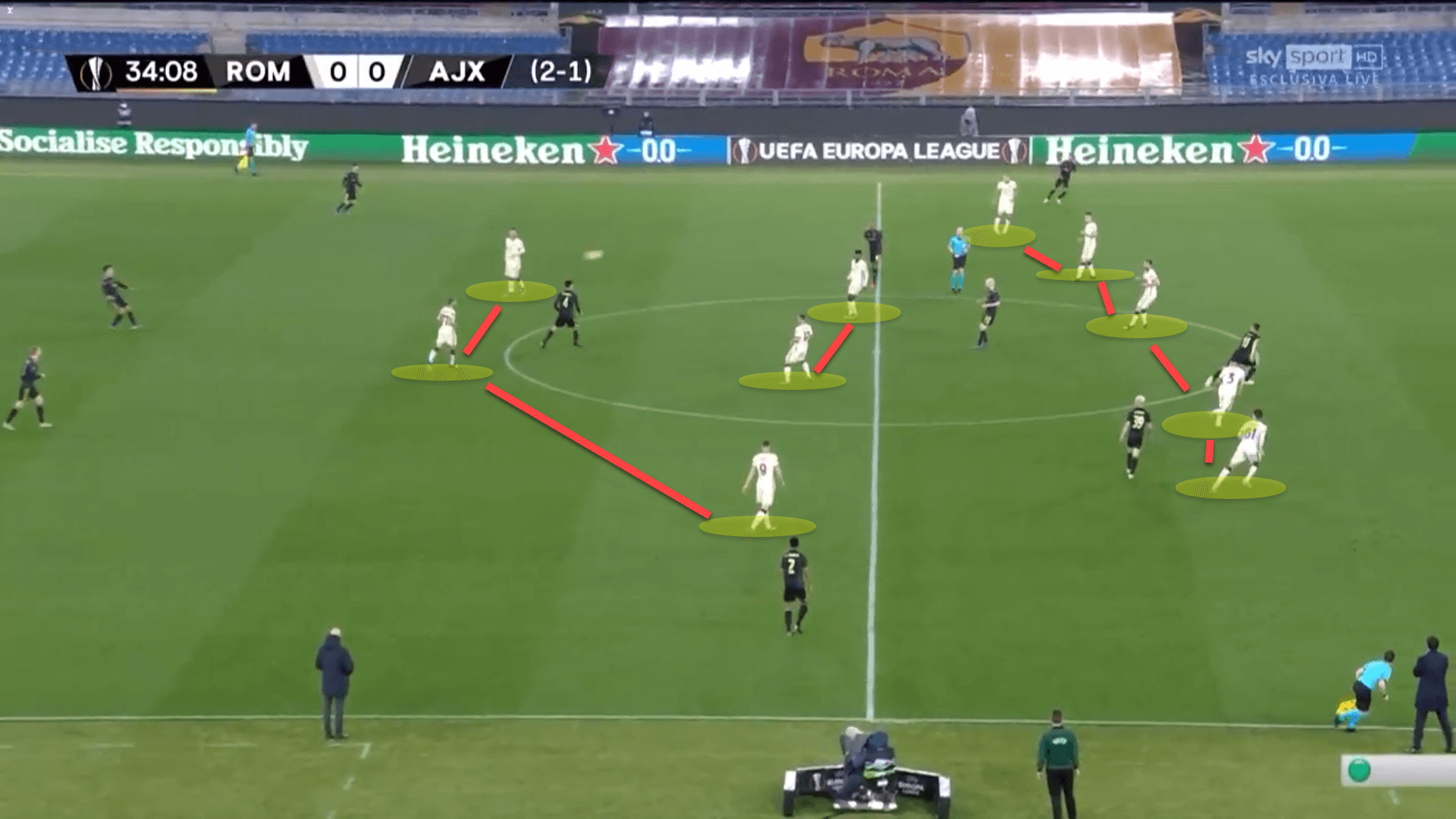
The objective for Fonseca, when his sides are defending in a medium-level block, is to force the opposition to either play out to the wide areas where his players can press aggressively to win back the ball using the touchline as an extra defender, or else to force them long.
In the previous image, Ajax had endured almost a full half of being forced to the outside and backward with their passing and so began playing direct passes in behind, hoping to succeed at least once.
It’s likely that Lille will play in a similar manner. Over the last season, Les Dogues weren’t pressing too high anyway under Gourvennec, averaging 31.9 pressures in the attacking third per 90 in Ligue 1.
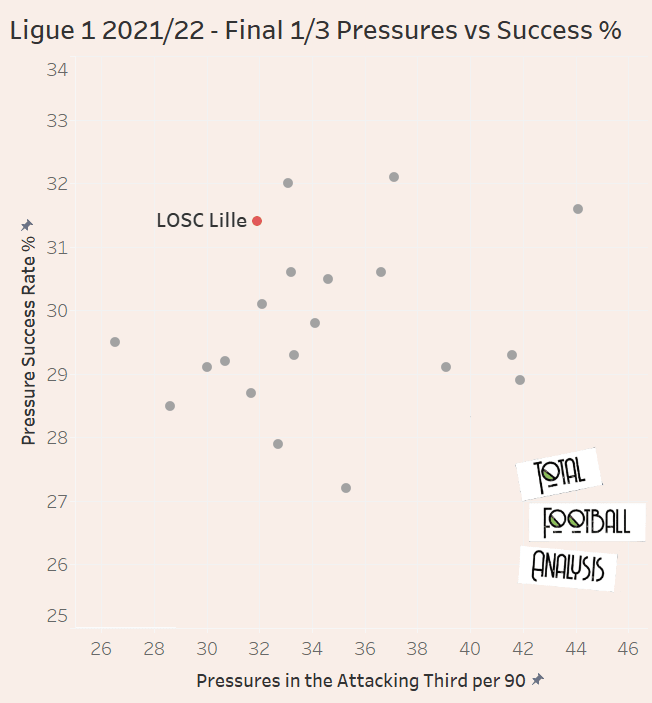
Their statistics for the previous campaign are very reminiscent of Roma’s first season under Fonseca in 2019/20. A high success rate of 31.4 percent but one of the lowest-ranked teams for pressures in the final third.
In this regard, whether Lille utilise a 4-2-3-1, a 3-4-2-1 or keep their 4-4-2, the transition to the new manager’s tactics in the defensive phases may not be too drastic for the 2021 champions.
Possession, build-up play and direct balls
Coming back to the idea of control, Fonseca wants his side to be the dominant possession team in a game. Despite not having the most technically-gifted players on his side, Fonseca’s Roma were able to hold the majority of possession throughout the course of his time in the capital.
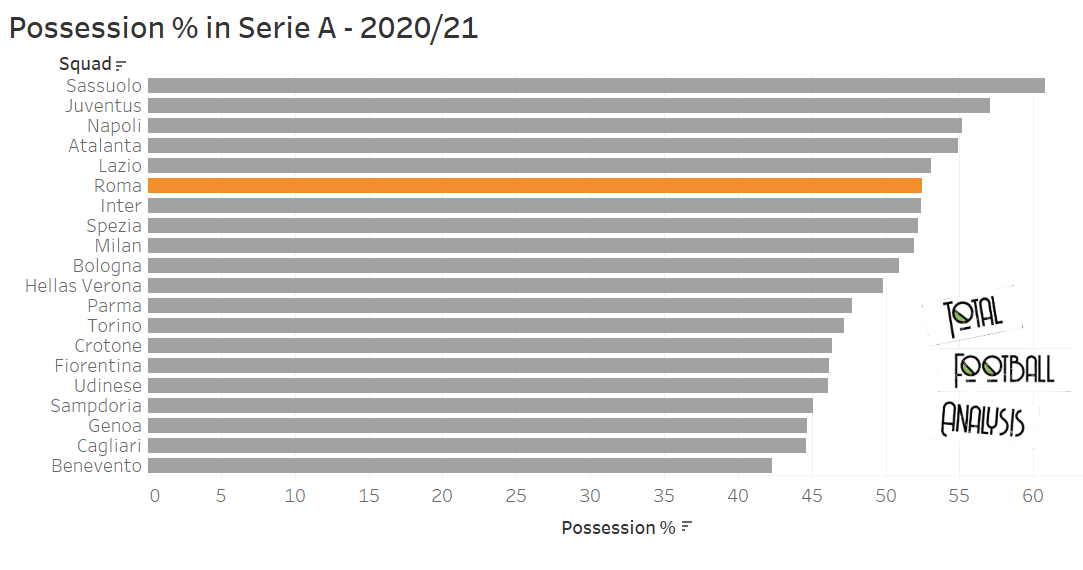
In his final season with Roma in the 2020/21 campaign, the Giallorossi averaged 52 percent possession which was the sixth-highest in Serie A. The season prior, this figure stood at 52.9 percent.
Last season, in Ligue 1, Lille were one of the highest-ranked sides for possession, boasting an average of 50.8 percent over the course of the calamitous campaign.
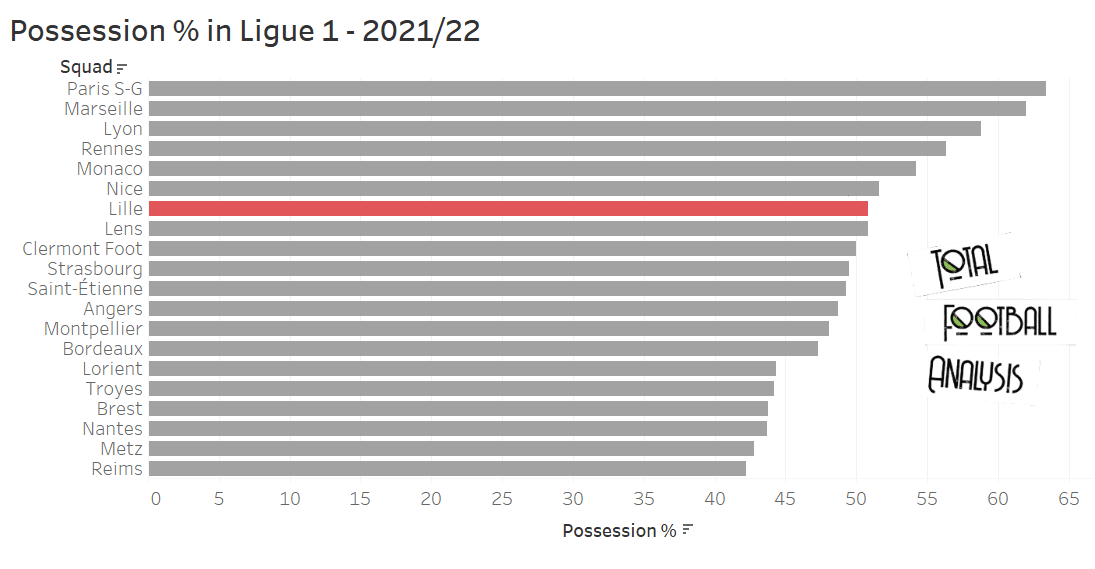
This was even in spite of losing a key member of their midfield from the title-winning season last summer in Boubakary Soumaré.
Now, with players such as the former Man United youth product Angel Gomes, Renato Sanches, Yusuf Yazıcı, Amadou Onana, and Benjamin André, it is very plausible for Fonseca to implement a more possession-based style of football. It’s likely that Lille’s possession average will increase by several percentage points this time around under the Portuguese coach.
As with most possession sides, Fonseca imposes an emphasis on build-up play, involving the goalkeeper in progressing the ball from deeper areas of the pitch as much as possible. The manager believes in very fluid play from the defensive third, including splitting the centre-backs, pushing his fullbacks higher and having his double-pivot constantly screening behind the opposition’s first line of pressure to act as a forward passing option.
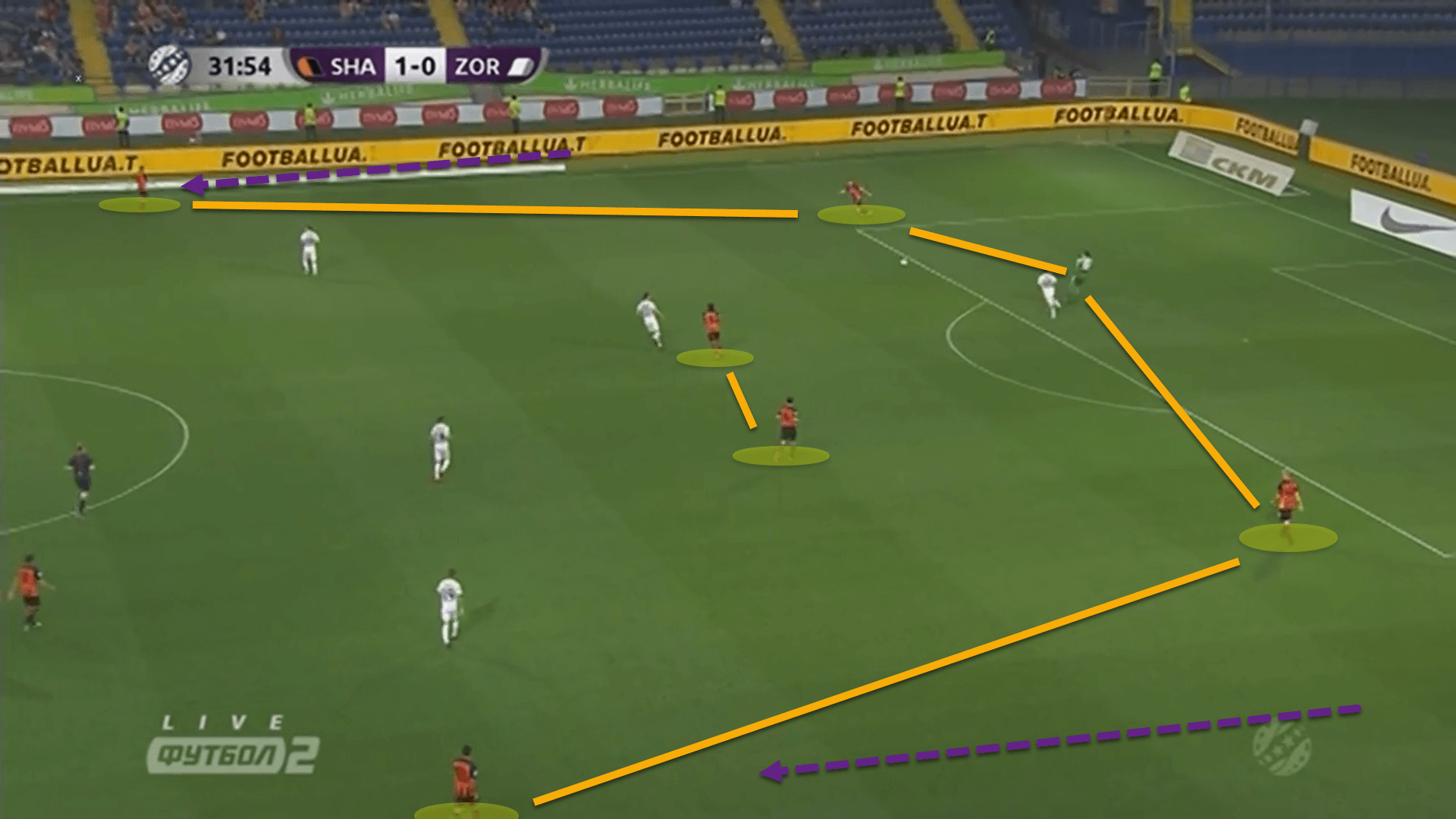
This is the set-up Fonseca prefers when his sides are playing out from the back. The goalkeeper, the entire back four and the double-pivot need to be comfortable on the ball. Overall, the structure is quite conventional once the correct players are employed.
Even when the coach selects a back three formation, as seen from his second year with Roma, the shape remains very similar, with Fonseca instructing his players to create a somewhat lopsided 4-2 structure. The main difference is that one of the wide central defenders pushes out near the side-line.
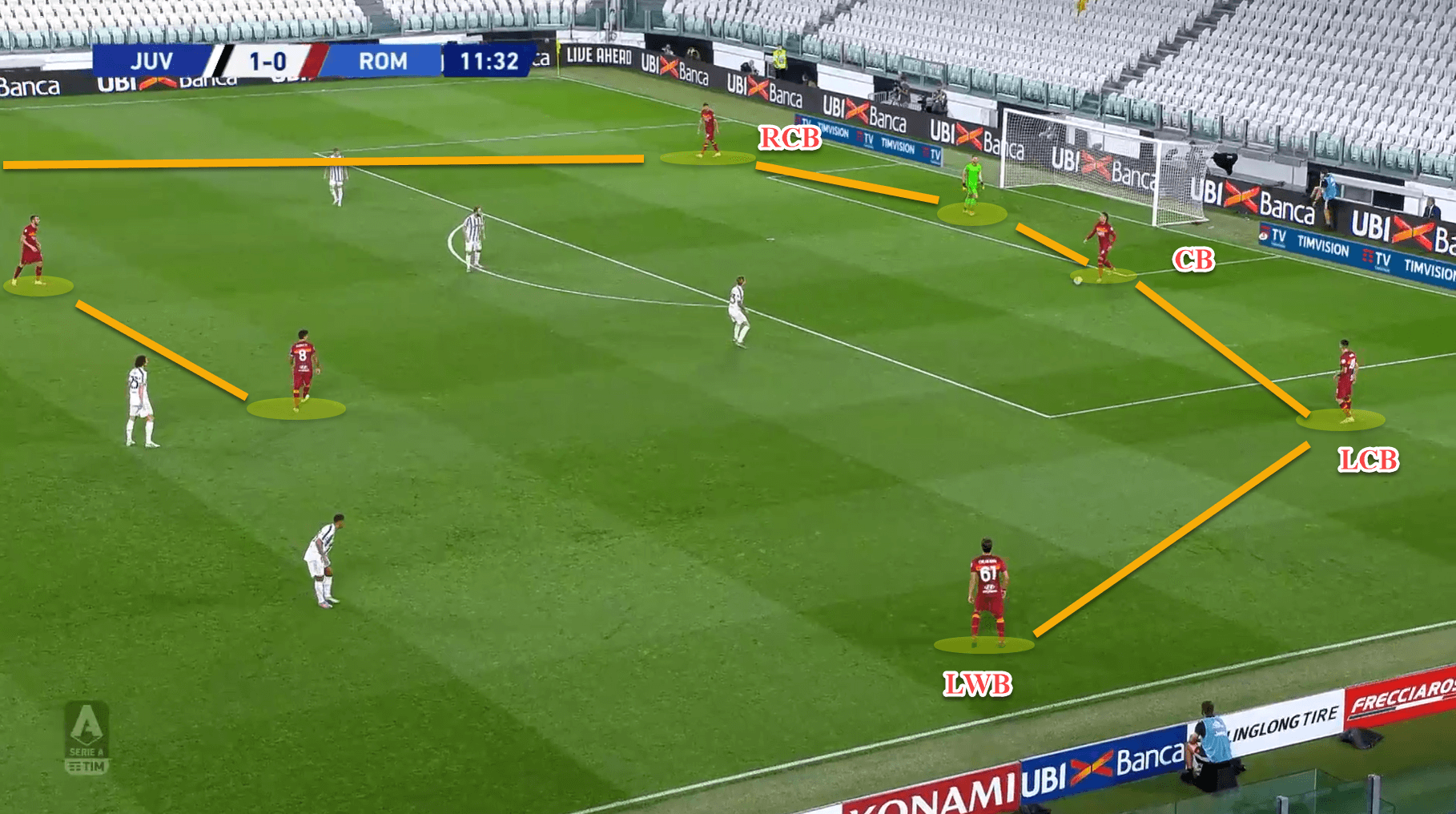
From there, the Giallorossi can overload the wide areas and combine with the double-pivot to try and break through the opponent’s initial pressure.
Sometimes though, playing through a high press isn’t possible, so having a backup option is always a good idea for any head coach. At Roma, Fonseca’s plan B was Džeko. The Bosnian giant was constantly used as an outlet during the build-up phase to play long toward him in order to quickly progress play.
The following visual is a heatmap from Fonseca’s last European match, against Ole Gunnar Solskjær’s high-pressing Manchester United at the Stadio Olimpico:
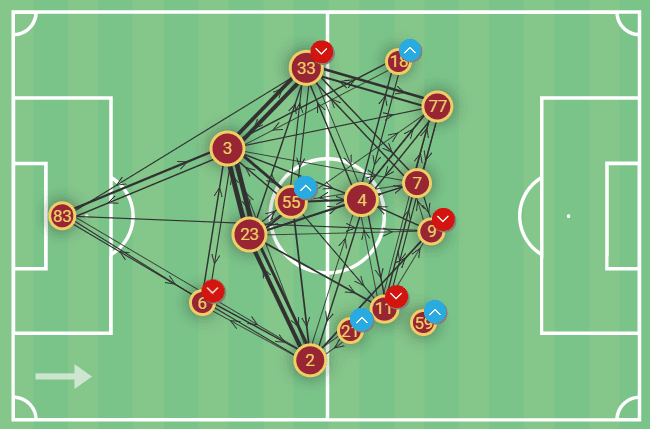
Balls from the centre-backs, fullbacks and the goalkeeper were all used on countless occasions in this match to beat the press. Of course, it helps that Džeko is so aerially dominant.
With Burak Yılmaz having moved to Fortuna Sittard in the Eredivisie, Fonseca may look to bring a target man into the club this summer due to the lack of aerial prowess up front. Timothy Weah and Jonathan David are excellent front players that possess immense speed, but neither are particularly good in their aerial duels.
Breaking the lines
One aspect of Fonseca’s teams that remain a constant is their keenness to play through the central areas to try and reach players between the lines.
In Rome, this is one area where Roma were extremely dangerous. Having players such as Henrikh Mkhitaryan and Lorenzo Pellegrini operating in these areas of the pitch wreaked havoc on opposition defenders.
Generally, as Fonseca’s teams are attempting to break down a deeper defensive block, they create a plus-one shape at the back. This means that, if the opponent has two strikers in their first line of pressure, Fonseca wants there to be three of his players behind the ball.
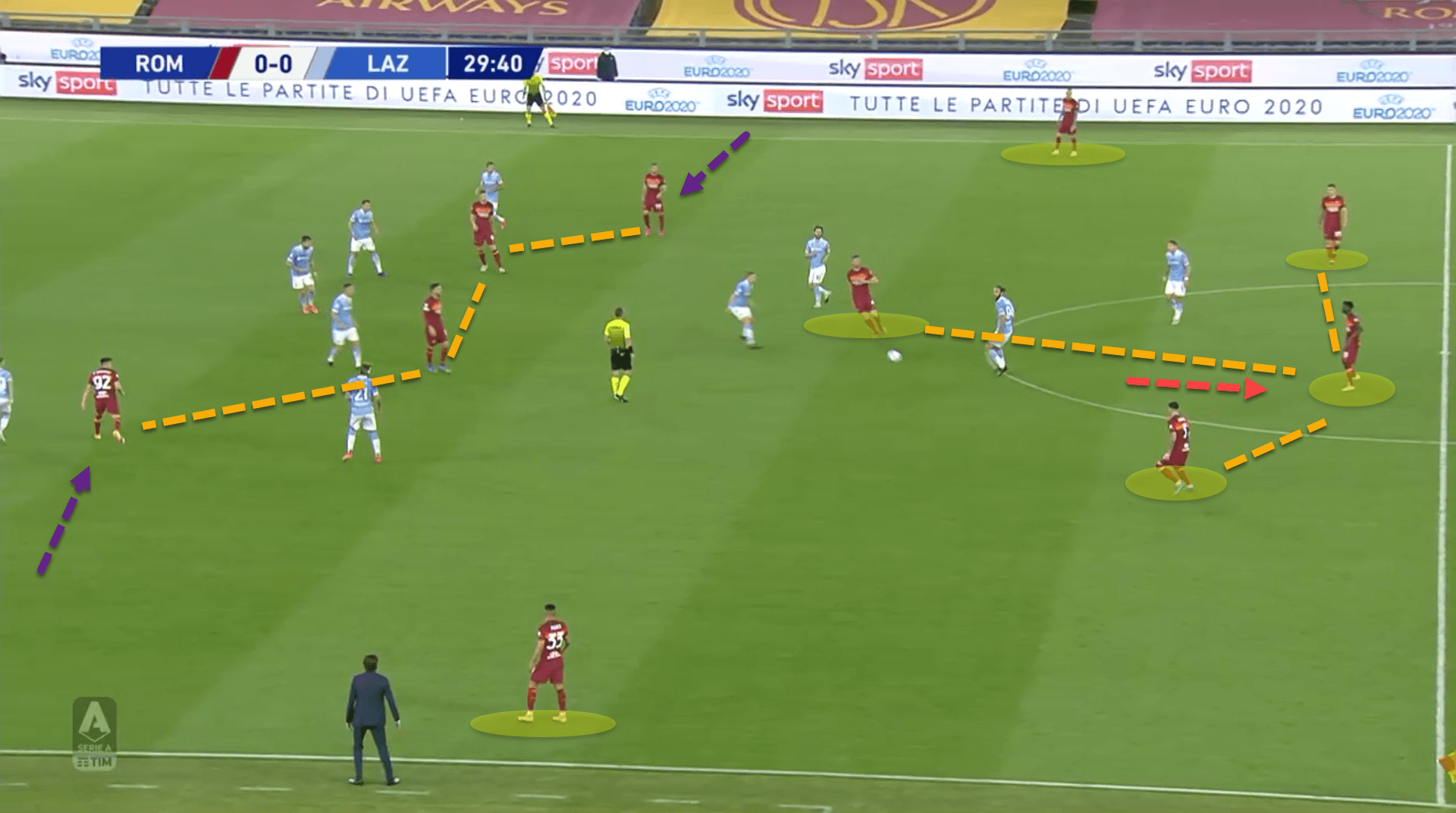
In this example, Lazio had two centre-forwards in their first line of pressure. One of Roma’s double-pivot dropped between their two centre-backs creating a 3v2, allowing the fullbacks to get higher up the pitch to keep the width.
Meanwhile, the wingers have tucked inside to allow the fullbacks to have free reign down the flanks. Joining Roma’s number ‘10’ and centre-forward, the wingers have aided in forming an overload between the lines.
One way that Fonseca’s side attempt to break teams down is through balls into space for runners in behind. This became a common feature of his Shakhtar Donetsk and Roma sides.
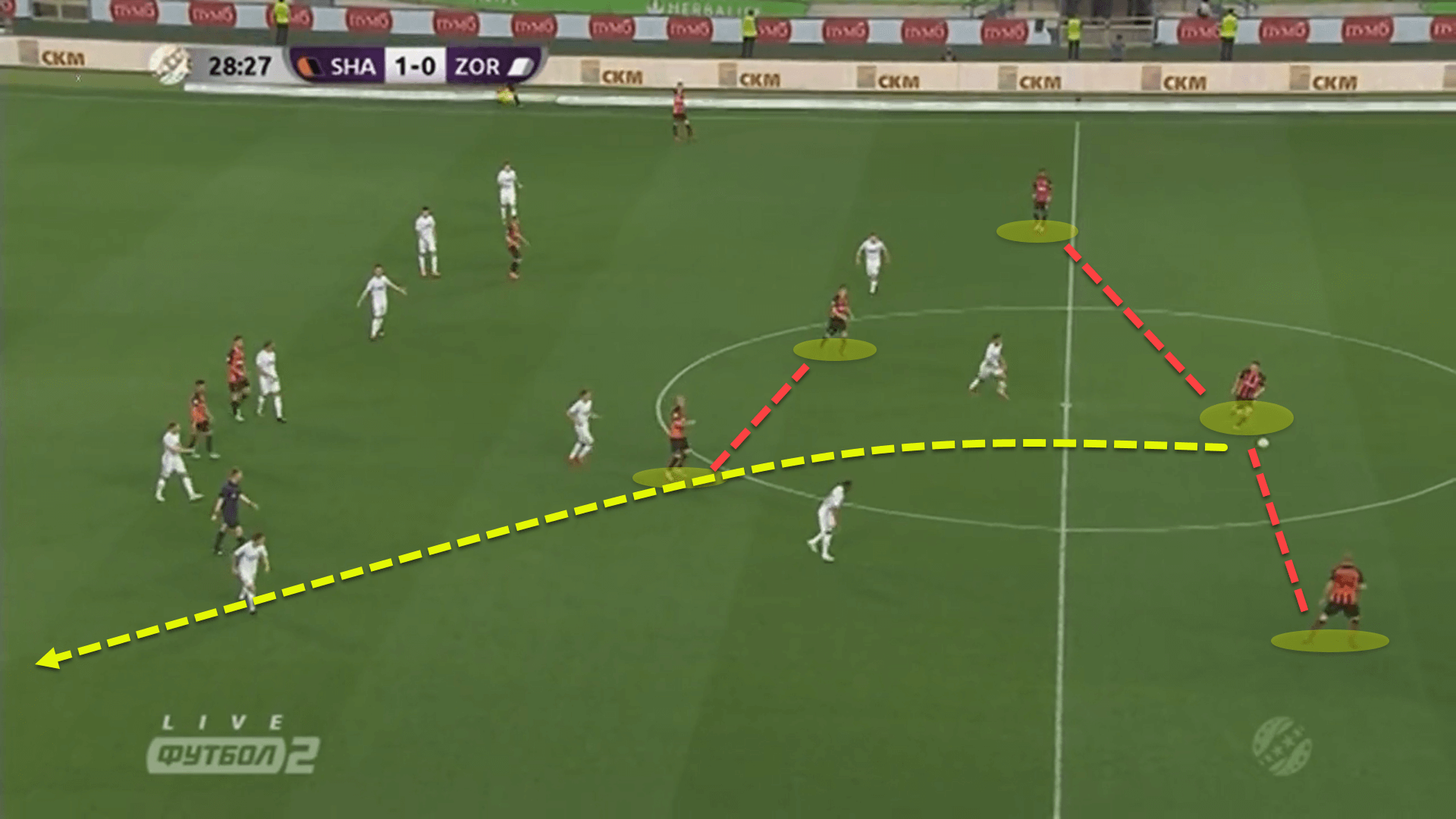
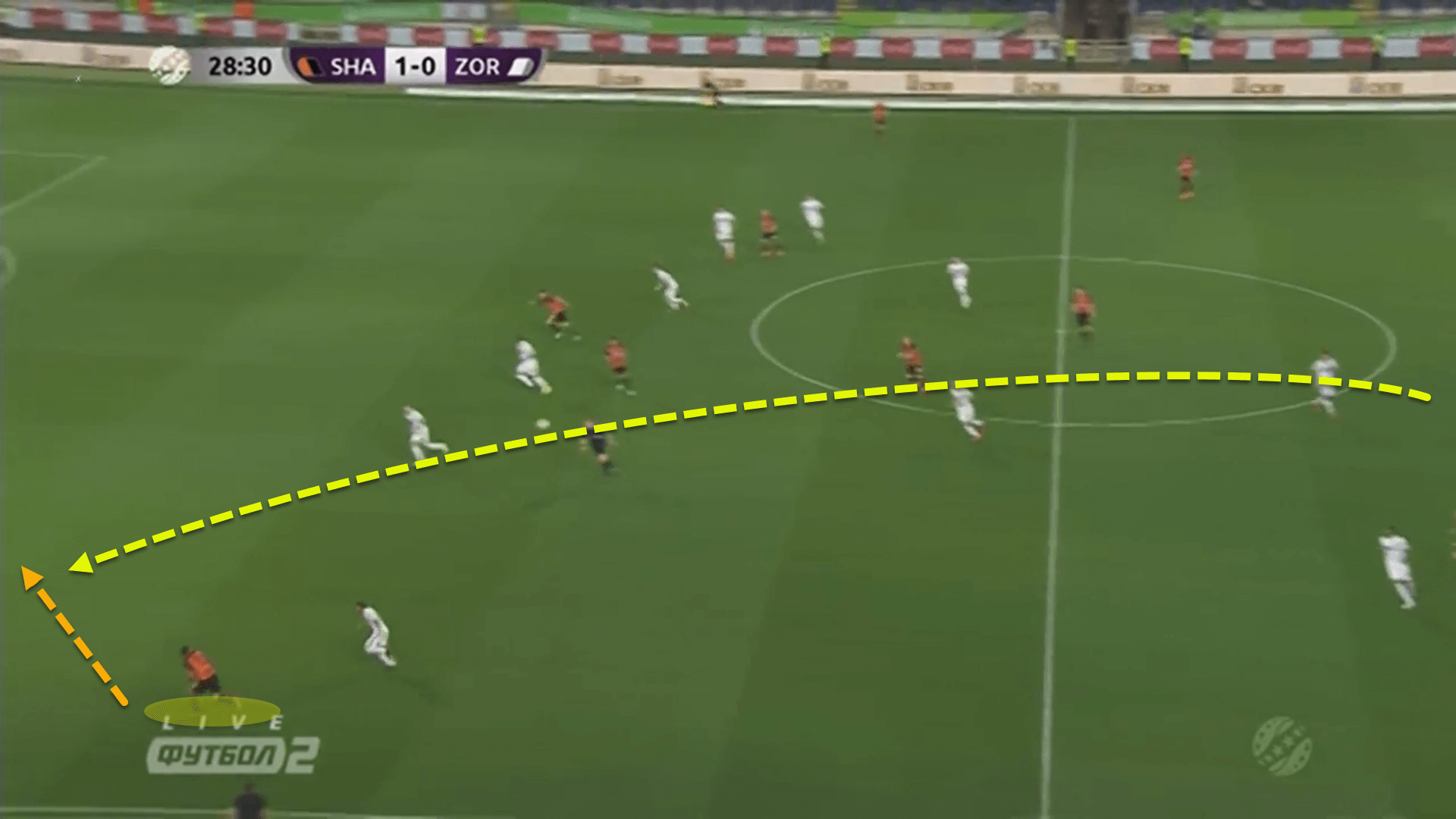
Space manipulation is a key component of Fonseca’s teams. The two images above represent this fantastically.
Shakhtar had overloaded the central corridors of the pitch, forcing Zorya Luhansk to narrow their defensive block. This has left space out wide for the fullbacks to run into.
The Ukrainian giants played a short backwards pass which acted as a trigger for Zorya to step up and press. Knowing this, the fullback began his run and the centre-back picked him out with a pitch-perfect through ball, getting Shakhtar into a wonderful goalscoring position.
There could be some very useful players already in the Lille squad who could excel under Fonseca’s tight-knit possession system. Gomes, for instance, has struggled ever since his arrival in Ligue 1 but possesses all the right technical attributes that Fonseca loves in a player. The attacking midfielder could have a massive season for Les Dogues.
Furthermore, having a fullback, like new arrival Akim Zedadka, who excels at making runs in behind, could be a great asset for the head coach.
Conclusion
It does seem like there’s a new dawn in Lille. With Fonseca now in charge, the style of football is expected to massively improve, as well as the team’s position on the table. However, given the French club have lost some key players like Sven Botman, Xeka, Yılmaz and Zeki Çelik, the side is undergoing a massive operation.
A newer, more refined style of football will be on display in the Stade Pierre Mauroy, and along with it, a transitional dismembering of the 2020/21 title-winning side. Fonseca’s appointment is certainly one to keep a keen eye on over the coming year.






Comments